Themed collection Spectroscopy and scattering for chemistry

Spectroscopy and scattering for chemistry: new possibilities and challenges with large scale facilities
Kirsten M. Ø. Jensen, Dorota Koziej and Serena DeBeer introduce the Nanoscale themed issue on spectroscopy and scattering for chemistry: new possibilities and challenges with large scale facilities.

Nanoscale, 2020,12, 17968-17970
https://doi.org/10.1039/D0NR90182B
Applications of pair distribution function analyses to the emerging field of non-ideal metal–organic framework materials
Pair distribution function, PDF, analyses are emerging as a powerful tool to characterize non-ideal metal–organic framework (MOF) materials with compromised ordering.
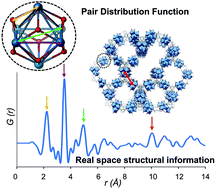
Nanoscale, 2020,12, 15577-15587
https://doi.org/10.1039/D0NR01673J
Characterizing electronic and atomic structures for amorphous and molecular metal oxide catalysts at functional interfaces by combining soft X-ray spectroscopy and high-energy X-ray scattering
Combined analyses by operando soft X-ray spectroscopy and high-energy X-ray scattering offers opportunities to unravel electronic and atomic structures that underpin interfacial catalysis.
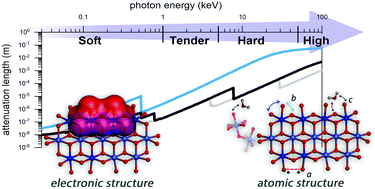
Nanoscale, 2020,12, 13276-13296
https://doi.org/10.1039/D0NR02350G
Selective magnetometry of superparamagnetic iron oxide nanoparticles in liquids
A new photon-in/photon-out magnetic probe empowers an in situ estimation of size distribution and atomic structure of iron oxide nanoparticles in suspension.
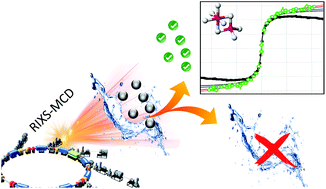
Nanoscale, 2020,12, 16420-16426
https://doi.org/10.1039/D0NR02866E
In situ total scattering experiments of nucleation and crystallisation of tantalum-based oxides: from highly dilute solutions via cluster formation to nanoparticles
The formation mechanism of amorphous tantalum oxides was studied by total scattering experiments starting from alkoxide precursors. Hydrolysed TaxOyHz clusters form in highly dilute solutions which were transformed into L-Ta2O5 by calcination.
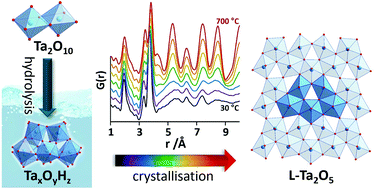
Nanoscale, 2021,13, 150-162
https://doi.org/10.1039/D0NR07871A
The missing pieces of the PuO2 nanoparticle puzzle
We report a full characterization of PuO2 nanoparticles at the atomic level and probe their local and electronic structure by a variety of methods available at the synchrotron and theoretical approaches.
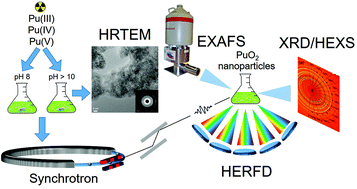
Nanoscale, 2020,12, 18039-18048
https://doi.org/10.1039/D0NR03767B
Effect of molten sodium nitrate on the decomposition pathways of hydrated magnesium hydroxycarbonate to magnesium oxide probed by in situ total scattering
We use pair distribution function analysis of in situ total scattering data and complementary techniques to reveal how molten NaNO3 modifies the decomposition pathways of a hydrated magnesium carbonate to the formation of MgO.
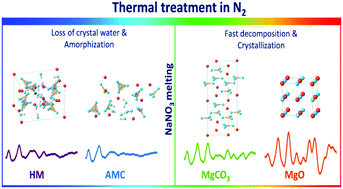
Nanoscale, 2020,12, 16462-16473
https://doi.org/10.1039/D0NR01760D
New reflections on hard X-ray photon-in/photon-out spectroscopy
The combination of X-ray absorption with X-ray emission spectroscopy requires careful consideration of the experimental protocol. The article discusses general aspects with examples for bio-catalysis and colloidal magnetic nanoparticles.
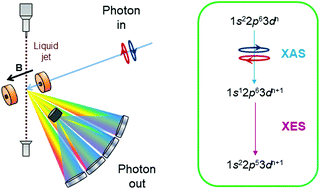
Nanoscale, 2020,12, 16270-16284
https://doi.org/10.1039/D0NR01983F
The role of pre-nucleation clusters in the crystallization of gold nanoparticles
The gold nanoparticle nucleation stage identified by XAS is accompanied in SAXS by an abrupt shrinkage of the size of molecular pre-nucleation clusters into gold nuclei, which is interpreted as a non-classical nucleation mechanism.
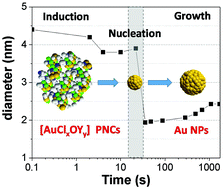
Nanoscale, 2020,12, 16173-16188
https://doi.org/10.1039/D0NR03486J
Hard X-ray-based techniques for structural investigations of CO2 methanation catalysts prepared by MOF decomposition
We investigate the structure-activity correlations of methanation catalysts obtained by thermal decomposition of a Ni-based metal-organic framework, using pair distribution function, X-ray absorption spectroscopy and X-ray diffraction.
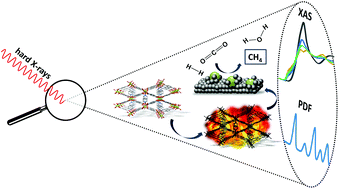
Nanoscale, 2020,12, 15800-15813
https://doi.org/10.1039/D0NR01750G
In situ X-ray emission and high-resolution X-ray absorption spectroscopy applied to Ni-based bimetallic dry methane reforming catalysts
The effect of cobalt on the catalytic activity of a NiCoO dry methane reforming catalyst was investigated by in situ XES and HERFD XAS. Co is shown to hamper the reduction of the Ni in the NiCoO catalyst by modulation of its electronic structure.

Nanoscale, 2020,12, 15185-15192
https://doi.org/10.1039/D0NR01960G
In situ speciation and spatial mapping of Zn products during pulsed laser ablation in liquids (PLAL) by combined synchrotron methods
Material ejection in pulsed laser ablation in liquids is analysed by X-ray in situ methods to resolve particle formation and oxidation.
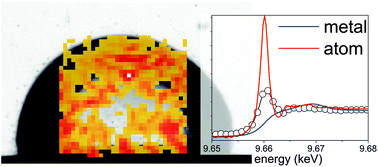
Nanoscale, 2020,12, 14011-14020
https://doi.org/10.1039/D0NR01500H
Evolution of short-range order in chemically and physically grown thin film bilayer structures for electronic applications
The local atomic structure of two stacked thin films is probed by applying grazing incidence x-ray total scattering at variable incidence angle and resolving pair distribution functions for each individual layer.
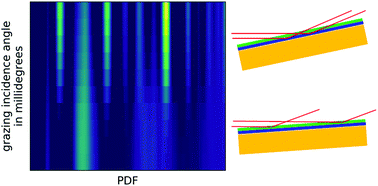
Nanoscale, 2020,12, 13103-13112
https://doi.org/10.1039/D0NR01847C
Molybdenum carbide and oxycarbide from carbon-supported MoO3 nanosheets: phase evolution and DRM catalytic activity assessed by TEM and in situ XANES/XRD methods
Nanosheets of molybdenum(VI) oxide supported on carbon spheres were carburized and utilized for the dry reforming of methane (DRM). A molybdenum oxycarbide phase was identified as active for DRM and characterised by XANES and TEM methods.

Nanoscale, 2020,12, 13086-13094
https://doi.org/10.1039/D0NR02908D
Na-Ion storage in iron hydroxide phosphate hydrate through a reversible crystalline-to-amorphous phase transition
Iron(III) hydroxide phosphate hydrate Fe1.13(PO4)(OH)0.39(H2O)0.61 is investigated for the first time as a Na-ion battery cathode. The material exhibits similar storage capacities for Na- and Li-ions at relatively low current rates (i.e. C/10).
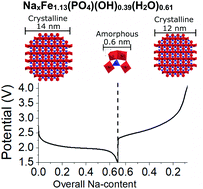
Nanoscale, 2020,12, 12824-12830
https://doi.org/10.1039/D0NR01922D
Cubes on a string: a series of linear coordination polymers with cubane-like nodes and dicarboxylate linkers
Crystalline and amorphous cubane-type coordination polymers were synthesized and investigated by X-ray total scattering and single crystal diffraction.
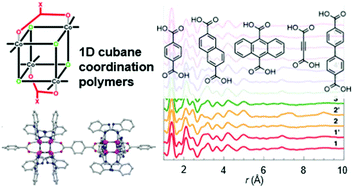
Nanoscale, 2020,12, 11601-11611
https://doi.org/10.1039/D0NR01503B
Bad neighbour, good neighbour: how magnetic dipole interactions between soft and hard ferrimagnetic nanoparticles affect macroscopic magnetic properties in ferrofluids
Hard ferrimagnetic CoFe2O4 nanoparticles become softer in the presence of neighbouring soft ferrimagnetic MnFe2O4 nanoparticles.
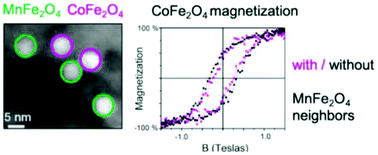
Nanoscale, 2020,12, 11222-11231
https://doi.org/10.1039/D0NR02023K
Elucidating the relationship between nanoparticle morphology, nuclear/magnetic texture and magnetic performance of sintered SrFe12O19 magnets
The relationship between nanoparticle morphology, self-induced atomic/magnetic texture and magnetic properties of high-performance hexaferrite magnets is elucidated using neutron/X-ray pole figure analysis and neutron/synchrotron powder diffraction.
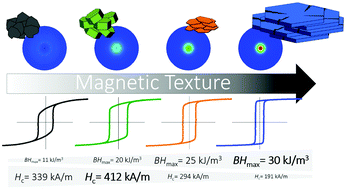
Nanoscale, 2020,12, 9481-9494
https://doi.org/10.1039/D0NR01728K
Exploring the direct synthesis of exchange-spring nanocomposites by reduction of CoFe2O4 spinel nanoparticles using in situ neutron diffraction
In situ neutron powder diffraction (NPD) was employed for investigating gram-scale reduction of hard magnetic CoFe2O4 (spinel) nanoparticles into CoFe2O4/CoFe2 exchange-spring nanocomposites via H2 partial reduction.
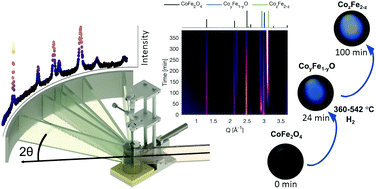
Nanoscale, 2020,12, 9440-9451
https://doi.org/10.1039/D0NR00912A
Mapping the redox chemistry of common solvents in solvothermal synthesis through in situ X-ray diffraction
The redox properties of five common solvents under solvothermal conditions are demonstrated through synthesis and characterization of 3d metal based materials.
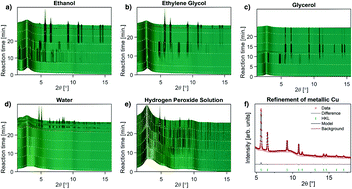
Nanoscale, 2020,12, 8511-8518
https://doi.org/10.1039/D0NR01240H
Surface softening in palladium nanoparticles: effects of a capping agent on vibrational properties
The presence of a capping agent (CTAB) on Pd nanoparticles produces a strong static disorder in the surface region.
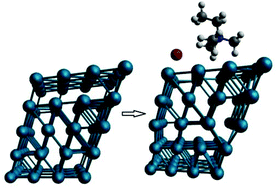
Nanoscale, 2020,12, 5876-5887
https://doi.org/10.1039/D0NR00182A
Core–shell PdCu bimetallic colloidal nanoparticles in Sonogashira cross-coupling reaction: mechanistic insights into the catalyst mode of action
PdCu bimetallic colloidal nanoparticles-catalyzed Sonogashira coupling is demonstrated proceed by a quasi-homogeneous pathway with involvement of an alkynylcopper intermediate.
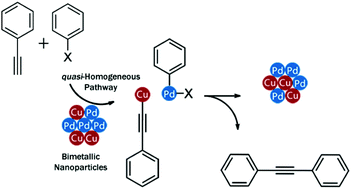
Nanoscale, 2020,12, 1171-1179
https://doi.org/10.1039/C9NR09075D
About this collection
Guest Edited by Professor Kirsten M. Ø. Jensen (University of Copenhagen, Denmark), Professor Dorota Koziej (University of Hamburg, Germany) and Professor Serena DeBeer (Max Planck Institute for Chemical Energy Conversion, Germany).
This online themed collection focuses on new studies taking advantage of in situ synchrotron and neutron techniques to elucidate mechanisms for material formation and function, including catalysts, batteries, gas storage materials, magnetic nanomaterials and thin films.